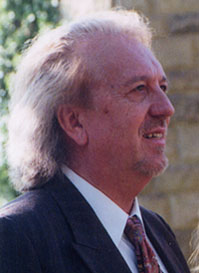FANFARE 2021
MUSA ROMANTICA Vidor Nagy (va); Péter Nagy (pn) BAYER RECORDS 100 404 (77:43)
SCHUBERT “Arpeggione” Sonata, D 821. SCHUMANN Fantasiestücke, op. 73. RAVEL Sonate Posthume for Violin and Piano (arr. Vidor Nagy). FRANCK Sonata in A Major for Violin and Piano, op. 120 (arr. Vidor Nagy)
Musa Romantica presents a recital by violist Vidor Nagy and Péter Nagy, piano. None of the quartet of works, spanning Schubert’s “Arpeggione” Sonata (1824) to Ravel’s single-movement Sonate posthume (1897), was originally composed for the viola. Schubert wrote the “Arpeggione” in response to a commission by Vincenz Schuster, an advocate for the work’s title instrument, a sort of cross between a cello and guitar. The Schumann Fantasiestücke (1849) originated as a composition for clarinet. Both the Ravel and Franck (1886) were conceived for the violin. Franck composed the latter for the legendary Belgian artist Eugène Ysaÿe. But it is also true that these works have long been too attractive to remain the sole province of their intended instruments. In that tradition, Vidor Nagy, for 30 years the principal viola of the Staatsorchester Stuttgart, here performs the works in versions for viola and piano. Nagy created the viola parts for the Ravel and Franck heard on this recording. The Schubert and Schumann pieces feature prior viola/piano arrangements. In all of the included compositions, Vidor Nagy plays with the utmost technical assurance, and a rich, focused, and lovely tone that he is able to vary both in dynamics and color to suit the work at hand. Indeed, Nagy’s flexible and all-embracing artistry is one of the most impressive aspects of this lovely recital. The selected works fall under the category of music of the Romantic era. Nonetheless, they require (at least under ideal circumstances) the artists to master and communicate four different musical approaches and styles. And (again hoping for the ideal), those different approaches contemplate not just variations in style and phrasing, but in the basic sonorities of the instruments themselves. The sound world of Schubert’s 1820s Vienna is quite different from Ravel’s late 19th-century Paris. Again, Vidor Nagy (ably complemented by Péter Nagy) meets this challenge in a most impressive manner. To be sure, all of the included works have enjoyed their share of outstanding recordings. But the laudable programming and realization of four such different and marvelous works is commendable. Fans of the viola’s unique sonic and expressive qualities will most certainly enjoy this recording. But I think it will bring great satisfaction to devotees of the included works, too. The recorded sound offers a lovely, realistic concert acoustic. Ulrich Drüner’s thoughtful liner notes explore both philosophical and musicological aspects of the repertoire. A most gratifying disc. Recommended.
Ken Meltzer
5 Stars: A beautiful viola/piano recital of Romantic works
